Factory Farming: Everything You Need to Know
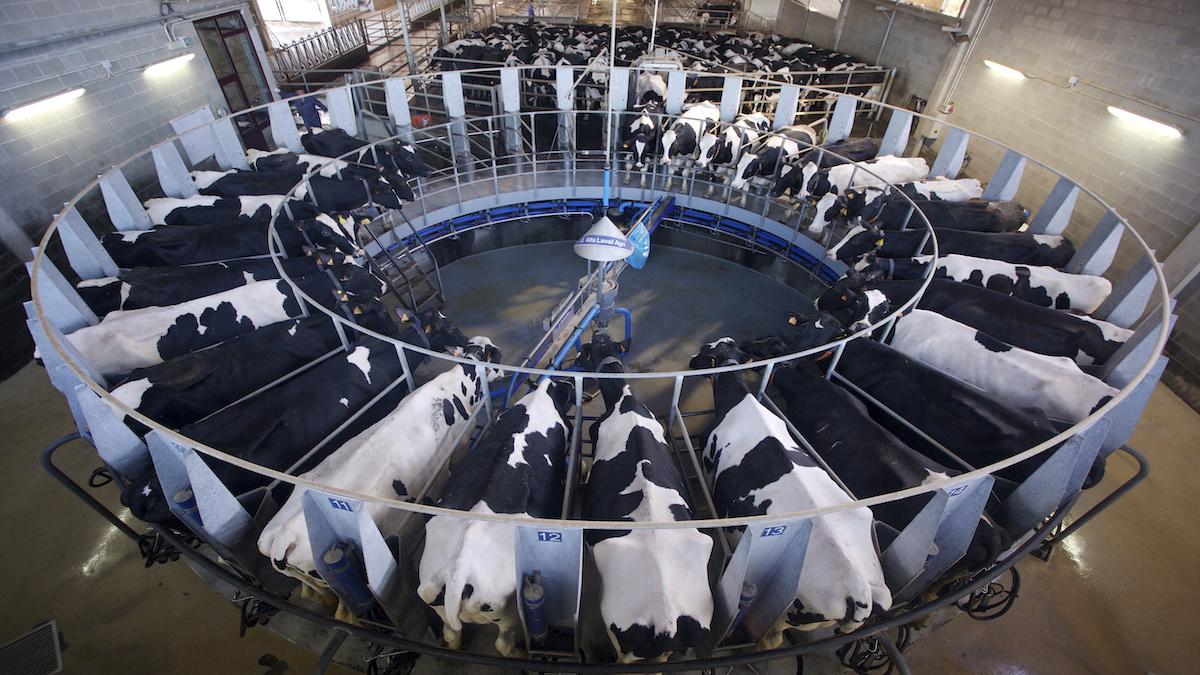
 Why you can trust us
Why you can trust us
Founded in 2005 as an Ohio-based environmental newspaper, EcoWatch is a digital platform dedicated to publishing quality, science-based content on environmental issues, causes, and solutions.
What Is Factory Farming?
Factory farming is a type of farming in which animals are raised and crowded together in close quarters. The animals are referred to as livestock and the farms are also called concentrated animal feeding operations (CAFOs).
Ultimately, it is a form of intensive agriculture, a type of agriculture designed to produce the highest possible yield per unit of land. Intensive agriculture stands in contrast to extensive agriculture, which is what you probably think of when you imagine a small, family farm. Extensive agriculture uses fewer inputs, such as human labor and basic machinery like tractors, and takes advantage of the soil’s natural fertility. For animal raising, an example of extensive agriculture is pastoral production, in which animals are grazed outdoors for their entire lives or herded by nomadic farmers. Because it is designed to maximize productivity, intensive agriculture requires many more inputs such as fertilizers and pesticides, and often leads to the clearing of more land through deforestation. In the case of animals, this means raising more in less space.
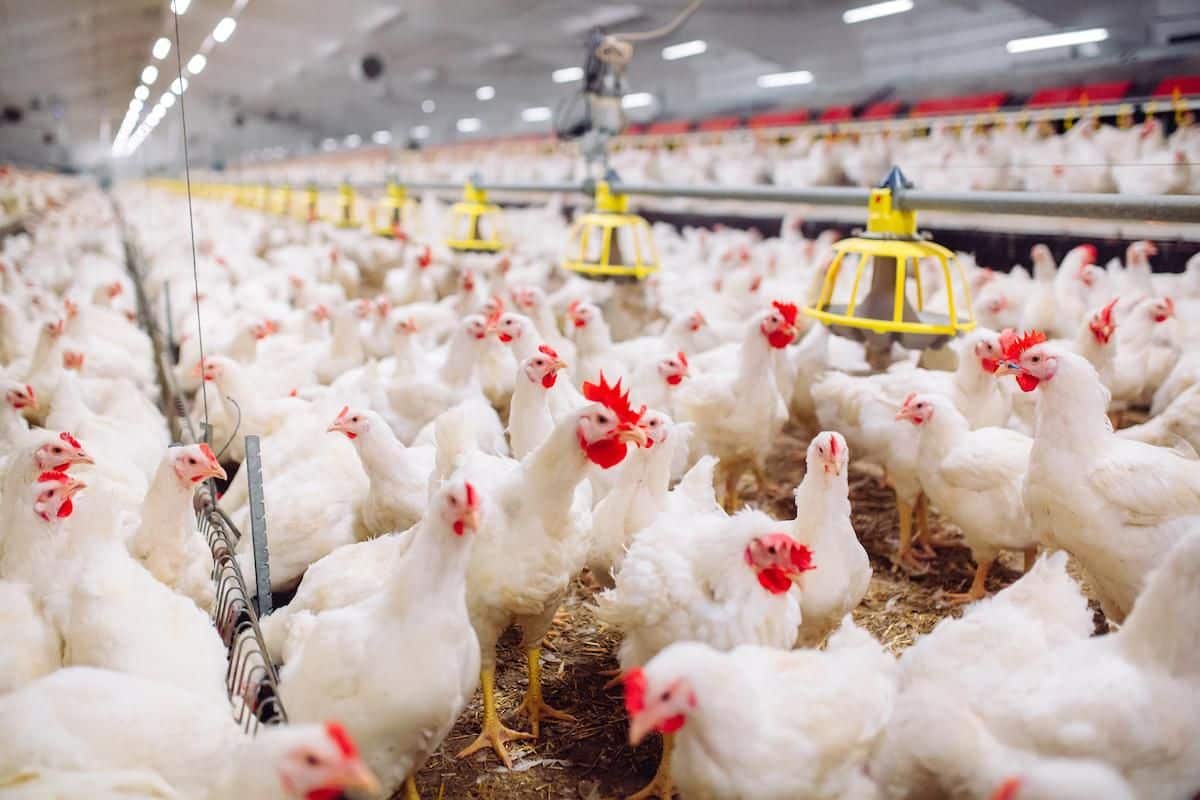
Intensive agriculture developed in earnest beginning in the 17th century in Britain, with developments such as more intensive crop rotation which allowed more animals to be fed and raised. Efficiency increased through the 18th and 19th centuries, which saw the rise of selective breeding in livestock for desirable traits such as longer wool in sheep. The current system of factory farming dominated U.S. agriculture by the 1980s. This process has made meat more affordable for the average American and increased efficiency. Since 1960, milk production has doubled in the U.S., meat production has tripled and egg production has quadrupled. However, the profits from agriculture have become concentrated in fewer and fewer hands. Between 1950 and 1997, the number of farms in the U.S. declined by 50 percent, while the average farm doubled in size. Today, more than 99 percent of U.S. farm animals and more than 90 percent of farm animals worldwide are raised on factory farms.
How Do Factory Farms Operate Today?
Factory farms are the primary means of raising animals like cows, pigs, chicken and fish. In addition to meat, factory farms are also used to raise animals for milk, eggs and fur. A medium-large factory farm in the U.S. usually consists of 1,000 beef cattle, 700 dairy cows, 2,500 pigs, 55,000 turkeys, 30,000 egg-laying hens, or 125,000 broiler chickens. Control of these farms are concentrated in very few hands. As of 2015, the four largest companies in each sector controlled 85 percent of U.S. beef production, 66 percent of pork production and 51 percent of broiler chicken production. However, the companies do not typically handle the farming themselves, which is considered the least-lucrative part of the production process. Instead, they contract the farming out to individuals who usually have to go into large amounts of debt to get started and can therefore get trapped in unfavorable contracts, risking bankruptcy if they quit. This method was pioneered by Tyson Foods and first came to dominate chicken production. It is now widely used in pork production as well.
What Happens on Factory Farms?
Animals on factory farms are raised to be productive as quickly as possible. They spend their entire lives crowded together indoors, and are either physically mutilated or genetically modified to better accommodate human tastes and close quarters. For example, chickens are debeaked to prevent them from pecking each other and broiler chickens are genetically modified to have larger breasts, since consumers prefer breast meat. Cows and pigs will have their tails removed, or be docked, to discourage biting and to make milking easier. Cows are grown without horns to make it easier to pack them closely together.
Why Is Factory Farming Bad?
Many consider the crowded conditions faced by animals in factory farms to be inherently inhumane. In addition, this method of farming has consequences for human health and the environment in the form of biodiversity loss, greenhouse gas emissions, pollution, working conditions and disease risk.
Animal Cruelty
Animal abuse on factory farms can be divided into two types: systemic cruelty and egregious cruelty. Systemic cruelty refers to the business-as-usual conditions within factory farms, which animal welfare advocates consider to be inherently cruel. Egregious cruelty refers to specific acts of abuse by farmworkers. While the first type of cruelty is more pervasive, only the second is often prosecuted by law. However, egregious cruelty can also be encouraged and enabled by systemic realities. Ag-gag laws, for example, penalize activists and whistleblowers for documenting incidences of animal cruelty at factory farms. Further, U.S. animal protection laws generally do not apply to either birds or fish. Systemic abuses facing factory farmed animals vary slightly depending on the animal, but all suffer from spending lives confined in close quarters.
Chickens
Nearly ten times more birds are raised and killed for food in the U.S. than any other type of animal. Chickens raised for meat are referred to as broiler chickens. They are often crowded together in groups of 20,000 or more. Poor ventilation means the birds are at risk from ammonia exposure from their own waste, which irritates their eyes, throats and skin. Egg-laying hens do not fare much better. They are kept in containers called battery cages, which have a smaller area than an eight-and-a-half-by-11 sheet of paper. This is considered so cruel that it was actually banned by the European Union in 1999.
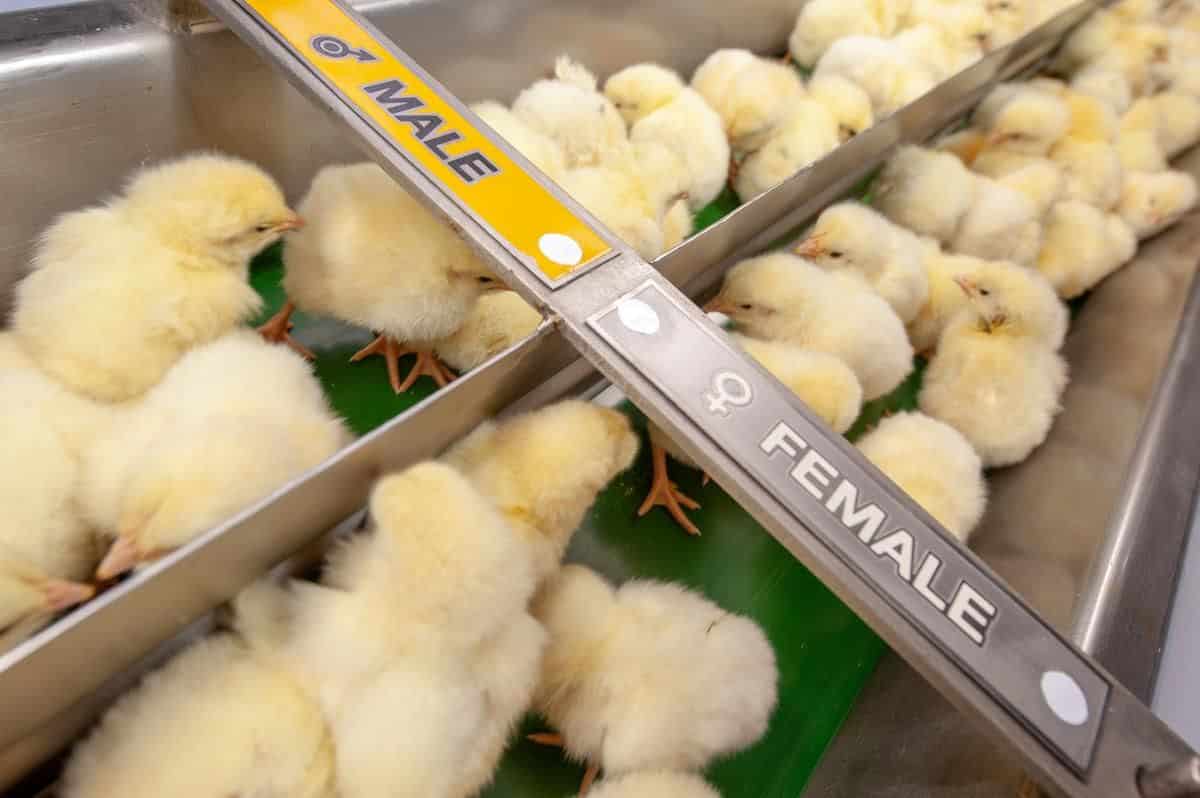
Pigs
Pigs are as smart as dogs and have a natural impulse to root and socialize. However, they are often kept in indoor pens on slatted floors that do not allow these activities. The frustration leads pigs to bite each other’s tails, and farmers deal with this by clipping off part of the pigs’ tails or their teeth without anesthetics. Pregnant sows in particular suffer in gestation crates, which cause them to lose bone strength and muscle mass because their movement is so restricted. This makes it more likely that they will fall and injure themselves.
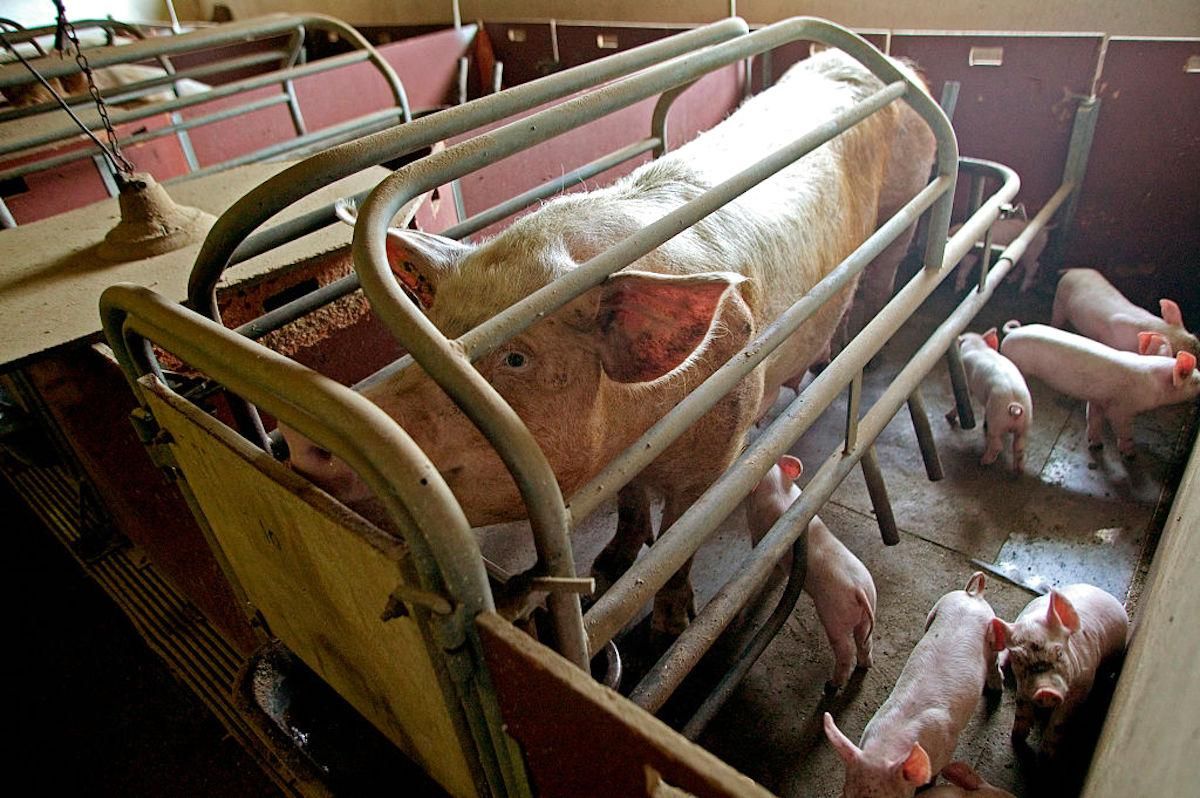
Cows
Beef cattle are the one farm animal that is still largely raised outdoors. However, they spend the last few months of their lives in feedlots, crowded together but without shelter. They can suffer from heat stress, respiratory problems from dust and digestive problems from being fed corn and other foods they have not evolved to digest. Milk cows, on the other hand, are kept indoors and often tethered. They are artificially inseminated once a year to keep the milk flowing, and then forcibly separated from their calves within a day of giving birth, which can be traumatic for both mother and child. Male calves are then raised as veal, often in crates only 2.1 by 2.5 feet. However, many states are beginning to ban veal crates and the industry is following with promises to phase out their use.
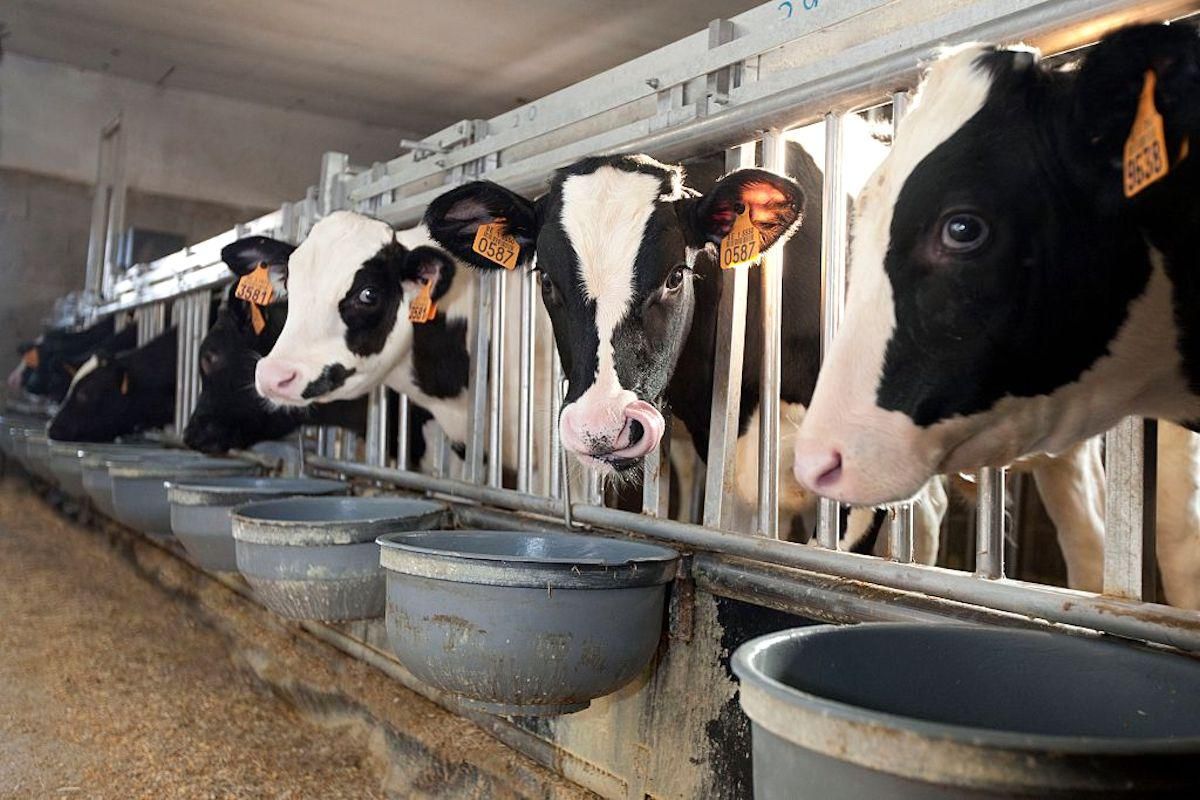
Fish
Fish farming is one of the fastest growing forms of agriculture, and about half of the most commonly eaten fish are now raised in farms. Fish are also kept in crowded conditions that encourage stress, injury and disease. Further, fish suffer from the misconception that they do not feel pain. They are killed without being stunned first — either by force, suffocation, freezing or being allowed to bleed out.
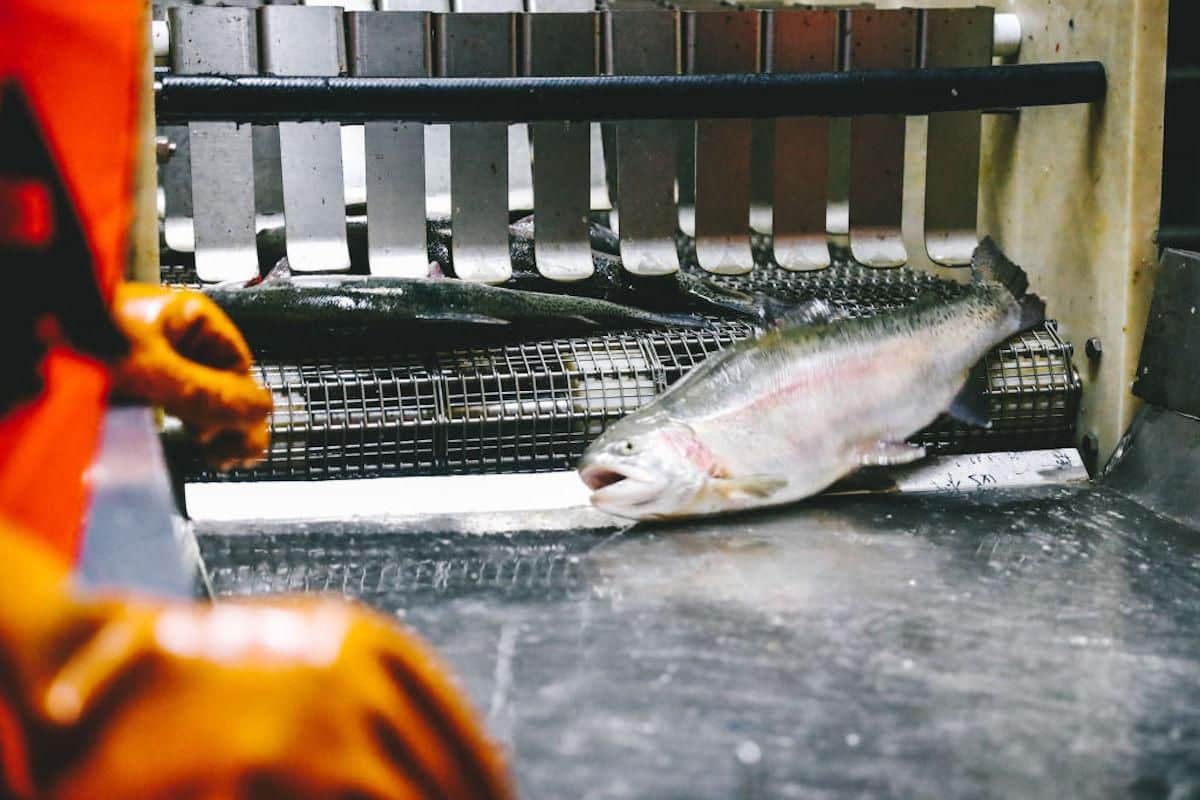
Environmental Harms
In addition to harming the farm animals themselves, factory farming also takes a toll on the planet as a whole. In fact, the practice contributes to many of our most pressing environmental crises including pollution, habitat and biodiversity loss and the climate crisis.
Pollution
The conditions animals face at factory farms extend to their surroundings. So many animals kept in close quarters generate lots of manure, and this manure is first stored in ponds and then spread on fields as fertilizer. However, environmental advocates say that these farms generate more manure than the soil can actually handle, and the rest enters waterways as runoff. This can lead to nutrient pollution, which encourages the growth of harmful algae that deprives water of oxygen, causing dead zones where no life can flourish. In fact, factory farming was blamed for the largest-ever “dead zone” in U.S. history in the Gulf of Mexico. Pollutants from animal waste such as hydrogen sulfide and ammonia can also enter the air and threaten the health and well being of farmworkers and the surrounding community.
Biodiversity Loss and Land Use
Animals raised for human consumption also need to eat. Usually, that food takes the form of either corn or soy, and growing it uses up a lot of land. In the U.S., in fact, corn and soy take up a third of the country’s agricultural land, and humans only consume less than 10 percent of it. This is an issue that has major global ramifications. Without meat and dairy consumption, it would be possible to feed the world’s population while reducing farmland by more than 75 percent. And the expansion of factory farming is a major cause of biodiversity loss. Clearing trees for cattle ranching is responsible for two-thirds of Amazon deforestation. The production of soy to feed livestock is also a major contributor to deforestation.
Climate Change
Emissions and land use mean that factory farming is a major contributor to the climate crisis. The livestock sector as a whole is responsible for 14.5 percent global greenhouse gas emissions. Forty-five percent of those emissions come from feed production and processing and 39 percent from the release of methane by cows and other ruminants. The world’s five biggest meat and dairy companies have an equal carbon footprint to ExxonMobil, and the world’s top 20 livestock companies emit more than the UK, France or Germany.
Human Health
The coronavirus pandemic has shown a spotlight on how human exploitation of the environment puts human health at risk. Factory farming is a perfect example of this as it threatens human health in many ways, from encouraging the evolution of antibiotic resistant bacteria to spreading pandemics.
Antibiotic Use
The overcrowding in factory farms has led to an overuse of antibiotics in order to prevent disease from spreading among animals. In fact, 73 percent of antibiotics worldwide are used on animals. In 2017, almost 11 million kilograms of antibiotics and 5.6 million kilograms of medically important antibiotics were sold in the U.S.exclusively for animals in factory farms. Bacteria can develop resistance to these drugs and then spread from animals to humans both through consumption and through run-off pollution from manure. Drug resistant bacteria currently kill 700,000 people a year.
Pandemics
Factory farming can encourage the spread of pandemics in two ways. First of all, the destruction of wild areas for agriculture increases the chance that humans will come into contact with new pathogens. Further, crowded conditions on farms cultivate diseases that may develop and spread. The H1N1 swine flu that killed 151,700 to 575,400 people in 2009 has been linked to a strain that emerged on U.S. pig farms in 1998.
Other Health Concerns
The conditions on factory farms can harm human health in other ways. Pathogens like E. coli can infect humans through manure pollution or food-borne illness. In fact, the grain beef cattle are fed before slaughter increases their risk of E. coli infection, while the practice of feeding dead hens to live hens encourages Salmonella. Further, there is debate over whether the use of hormones to stimulate growth and milk production in cows increases the risk of breast, prostate and colon cancer in humans.
Environmental Justice
The factory farm system doesn’t just exploit animals and the planet — it also exploits the humans that work in the industry and the communities that surround it. Factory farming is often an example of environmental racism, in which low-income communities of color are targeted for exposure to unsafe conditions and pollutants.
Slaughterhouse Workers
Many slaughterhouse workers are low-income people of color who do not have many other employment options. Often they are undocumented and face deportation if they speak out about working conditions. The work can be stressful and dangerous. Workers can repeat the same motion 40,000 to 100,000 times per shift, and there are an average of two amputations per month in the industry. The vulnerability of these workers was made apparent during the coronavirus pandemic, when infections broke out at several meat packing plants in the U.S. and Canada. In July of 2020, the Centers for Disease Control and Prevention (CDC) said that 23 states reported 16,233 COVID-19 cases and 86 deaths in 239 facilities, while 87% of those infected were racial or ethnic minorities.
Rural Communities
The rise of factory farming has diminished rural communities in the U.S. Smaller family farms cannot compete with the larger operations, and mechanized agriculture means that they offer fewer jobs. Further, the smaller businesses that supported family farms, like equipment sellers or local restaurants, have also closed down. For those who remain, conditions are often unhealthy. Pollution from lagoons storing animal waste can cause health impacts like headaches, respiratory problems, skin infections, birth defects and premature death. For example, people in North Carolina who live near hog farms have higher death rates than people who live further away.
Where Is Factory Farming Most Common?
In the U.S., a few types of factory farming are concentrated in particular states and regions. Hog farming is concentrated in the U.S. South and Midwest, particularly North Carolina and Iowa. Broiler chicken farming is heavily concentrated on Maryland’s Eastern Shore, while the top states for cattle feedlots are Nebraska, Texas, Kansas, Iowa and Colorado. Worldwide China is the world’s leading meat producer, followed by the U.S., the EU and Brazil. China has rapidly expanded its pork production in particular, and this includes pork factory farms. In the last 30 years, the country has undergone a similar process of consolidation as the U.S did during the second half of the 21st century: Between 1991 and 2009, the total number of hog farms in China decreased by 70 percent, while the number of pigs living on those farms increased exponentially.
What Is Being Done to Help?
There is a growing movement to shift away from the factory farming model and towards more humane and sustainable forms of agriculture. In the U.S., Sen. Cory Booker has championed a Farm System Reform Act, which he most recently reintroduced in July.
This act would:
- Place a moratorium on new large CAFOs and shutter the largest existing ones by 2040.
- Hold corporations responsible for farm pollution.
- Offer a buyout to farmers who want to leave factory farming.
- Strengthen the Packers and Stockyards Act to protect contract farmers from unfair deals and farm workers from retaliation.
- Restore country of origin labeling requirements to beef and pork products, expand them to dairy products, and prevent imported meat from receiving a “Product of USA” label.
Internationally, Compassion in World Farming has called for a global agreement to end industrial agriculture, similar to the Paris agreement for tackling climate change.
There are also several organizations working to protect farm animals and promote change. Mercy for Animals conducts investigations in order to expose conditions on factory farms, while Farm Sanctuary rescues animals and provides them with safe homes.
What Can You Do?
In addition to supporting organizations that fight for animal welfare and adding your voice to calls for change, there are also lifestyle changes you can make to reduce your support for factory farms. One study has found that embracing a vegan diet is the single greatest thing an individual can do to reduce their environmental footprint. However, you can still shop and eat ethically without giving up animal products. Compassion in World Farming offers a four-step guide:
- Look for labels like “pasture reared” or “free range,” which should indicate your meat is from an actual farm and not a factory.
- Buy local — while you can’t guarantee your local farm isn’t a factory farm, it will probably be easier to find out.
- Cut down on food waste by eating all your leftovers.
- Don’t over-eat meat and dairy products.
Takeaway
Transitioning away from factory farming towards a more sustainable, compassionate and healthy agricultural system is a major part of solving the health and environmental crises impacting our planet and our communities. However, meat production and consumption have been rising worldwide since the 1970s, and they are expected to continue to do so if nothing changes. The Organisation for Economic Co-operation and Development (OECD) predicts that global meat production will continue to grow, by 40 million tonnes a year by 2029. Public policies and consumer behavior can both play a role in reversing this trend and creating a kinder, healthier food system.
Subscribe to get exclusive updates in our daily newsletter!
By signing up, you agree to the Terms of Use and Privacy Policy & to receive electronic communications from EcoWatch Media Group, which may include marketing promotions, advertisements and sponsored content.

 233k
233k  41k
41k  Subscribe
Subscribe 



